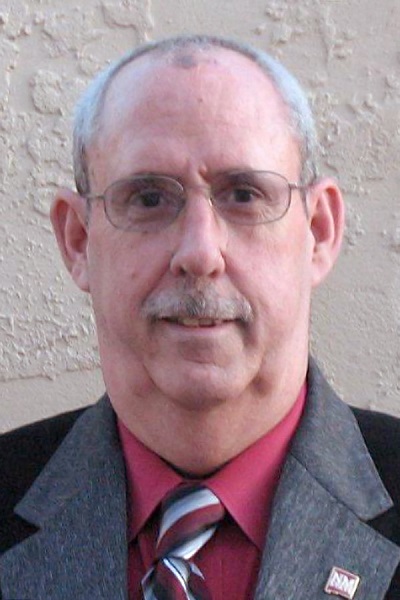 Glen Haubold, associate vice president of facilities and services at New Mexico State University, will travel to Washington, D.C., in August to present the results of a joint research project at the annual APPA: Leadership in Educational Facilities conference. (Courtesy photo)WRITER: Adriana M. Chavez, 575-646-1957, adchavez@nmsu.edu
Glen Haubold, associate vice president of facilities and services at New Mexico State University, will travel to Washington, D.C., in August to present the results of a joint research project at the annual APPA: Leadership in Educational Facilities conference. (Courtesy photo)WRITER: Adriana M. Chavez, 575-646-1957, adchavez@nmsu.edu
Glen Haubold, associate vice president of facilities and services at New Mexico State University, will travel to Washington, D.C., in August to present the results of a joint research project at the annual APPA: Leadership in Educational Facilities conference.
Haubold co-authored the research article, "Issues with Recovery and Recharge in Higher Education," with David Reynolds, associate vice president of facilities at the University of North Texas.
"Recovery and recharge is widely used as a funding mechanism in university facilities management to recapture costs in the facilities unit," Haubold said. "The purpose of this paper is to study issues and challenges involved with the use of this mechanism, particularly in times of constrained and reduced budgets. Higher education is changing rapidly, and the goal is to broaden the knowledge base about chargebacks while generating a discussion regarding the advantages and disadvantages associated with different budgetary models of recapturing costs."
The research was completed with the help of APPA's Center for Facilities Research. An executive summary of their findings will be published in the Jan/Feb 2018 issue of Facilities Manager.
According to the research study by Haubold and Reynolds, recover and recharge were generally initated at colleges and universities as a way to recapture and recover costs incurred for "non-maintenance" minor remodeling in the 1980s. Many institutions used this cost recovery to finance additional staff. As physical plant departments grew more sophisticated, growth of "construction crews" and the recovery of administrative costs allowed departments to expand further through billing for non-maintenance work. Because institutions assume facilities departments can typically perform this work at a lower cost than hiring outside contractors, this arrangement can save money. However, many institutions have used this approach to expand staff or weather budget cuts, creating a different challenge.
"In many cases, staff that should be focused on maintenance are now actively seeking ‘billable work' to keep the facilities budget in the black with what essentially have become transfer payments," Haubold and Reynolds state in the study.
Haubold said that when he arrived at NMSU in 2008, he found that half of the staff positions in his department were funded by recharge activities. Declines in enrollment and state revenues led Haubold to find ways to reduce overhead. Another recent challenge for Haubold is having to oversee a staff reduction without a corresponding decrease in recharge, creating a strain on facilities budgets.
More research is needed on the effects of recovery and recharge at university facilities, Haubold and Reynolds state in their research findings.